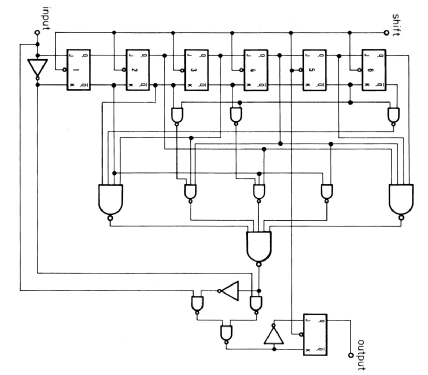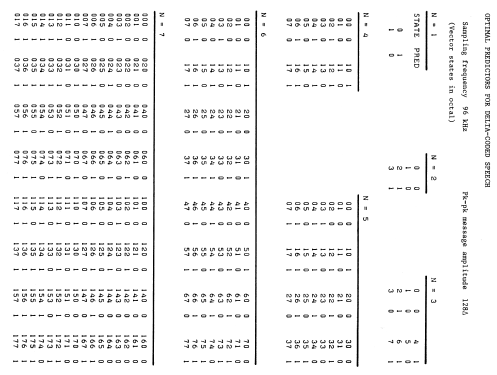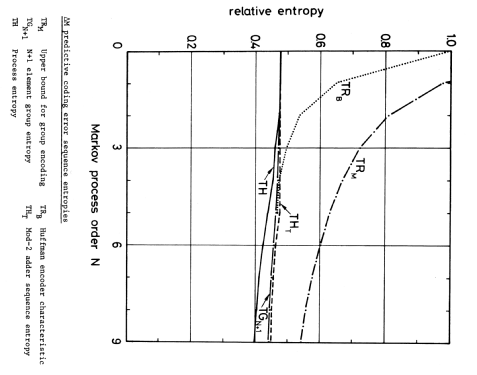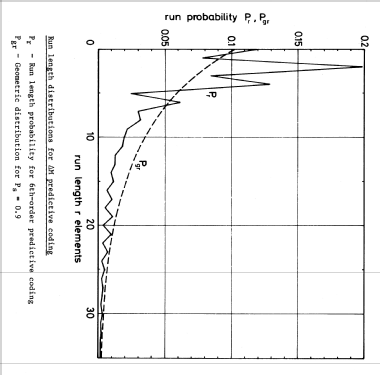Predictive coder for delta-modulated speech
Homebrew - ORIGINAL; GB
- Country
- Great Britain (UK)
- Manufacturer / Brand
- Homebrew - ORIGINAL; GB
- Year
- 1967
- Category
- Radio module post 1925 (not a part, not a key)
- Radiomuseum.org ID
- 305974
Click on the schematic thumbnail to request the schematic as a free document.
- Number of Transistors
- Wave bands
- - without
- Power type and voltage
- Powered by external power supply or a main unit. / 10 Volt
- Loudspeaker
- - - No sound reproduction output.
- Material
- Printed Circuit Board
- from Radiomuseum.org
- Model: Predictive coder for delta-modulated speech - Homebrew - ORIGINAL; GB
- Shape
- Miscellaneous shapes - described under notes.
- Dimensions (WHD)
- 63 x 13 x 141 mm / 2.5 x 0.5 x 5.6 inch
- Notes
-
Many types of encoded audio and video signals have significant redundancy, and the ability to estimate the future value of these signals from their past history can be employed in different ways in radio communication. At the transmitter, predictive coding can be used to reduce the signal bandwidth and trade the source redundancy for a more robust error-correcting code. At the receiver, a predictor can be used to optimise the detection of a digital signal in the presence of noise by adapting the decision threshold dynamically.
This simple TTL predictive coder for delta-modulated speech employs a sixth-order digital predictor that implements the function:
A.B.C.E + C.F* + D.E.F* + B.E.F* + C.D.E + B.C.D + B.D.E*.F* + A.D.E*.F*
= A.B.C.E + C.F* + E.F*.(D + B) + C.D.(E + B) + D.E*.F*.(A + B)where X* is the complement of X and A, B, . . . F represent the six most recent binary signal elements in order of generation time. This simplification of the optimal predictor function is obtained by assigning an arbitrary prediction to states with low probabilities of occurrence, and to those with high occurrence probabilities but near equiprobable transition probabilities (high state entropies).
Obvious modifications of the structure form the corresponding decoder, in which the input signal drives the modulo-2 adder but the output sequence enters the shift register.
The predictor operates with delta-modulated speech with typical peak-to-peak amplitude 128Δ and sampling frequency 96 kHz. The measured mod-2 adder sequence entropy is 0.48.
The coder was hand-wired on a DEC R-series Flip-Chip compatible module made using a Lektrokit breadboard. Home built in the UK by GM3NZI in 1967.
- Net weight (2.2 lb = 1 kg)
- 0 lb 2.1 oz (0.131 lb) / 0.060 kg
- Author
- Model page created by Bruce Taylor. See "Data change" for further contributors.
- Other Models
-
Here you find 41 models, 19 with images and 7 with schematics for wireless sets etc. In French: TSF for Télégraphie sans fil.
All listed radios etc. from Homebrew - ORIGINAL; GB
Collections
The model Predictive coder for delta-modulated speech is part of the collections of the following members.









